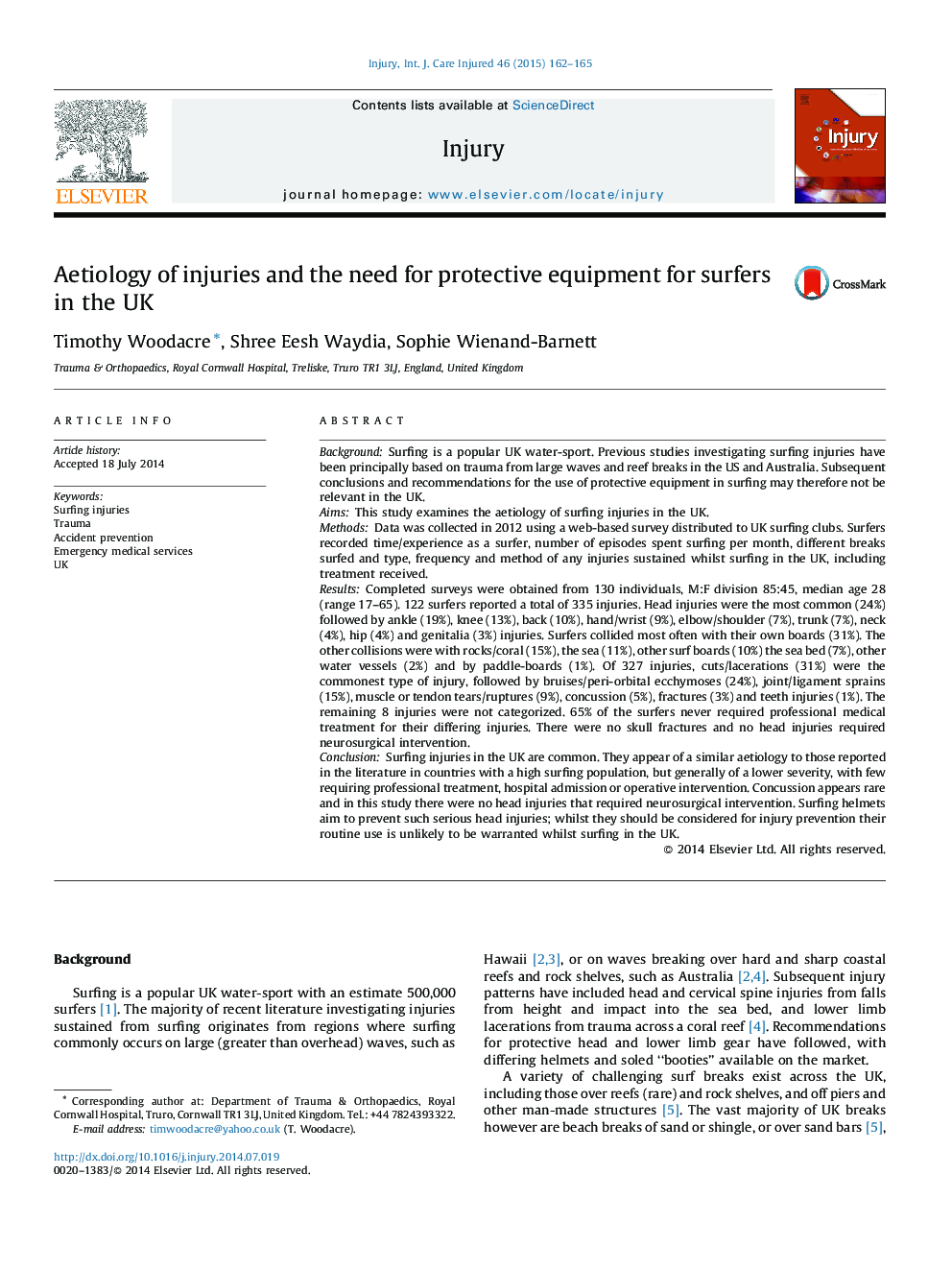| کد مقاله | کد نشریه | سال انتشار | مقاله انگلیسی | نسخه تمام متن |
|---|---|---|---|---|
| 3239189 | 1205986 | 2015 | 4 صفحه PDF | دانلود رایگان |
BackgroundSurfing is a popular UK water-sport. Previous studies investigating surfing injuries have been principally based on trauma from large waves and reef breaks in the US and Australia. Subsequent conclusions and recommendations for the use of protective equipment in surfing may therefore not be relevant in the UK.AimsThis study examines the aetiology of surfing injuries in the UK.MethodsData was collected in 2012 using a web-based survey distributed to UK surfing clubs. Surfers recorded time/experience as a surfer, number of episodes spent surfing per month, different breaks surfed and type, frequency and method of any injuries sustained whilst surfing in the UK, including treatment received.ResultsCompleted surveys were obtained from 130 individuals, M:F division 85:45, median age 28 (range 17–65). 122 surfers reported a total of 335 injuries. Head injuries were the most common (24%) followed by ankle (19%), knee (13%), back (10%), hand/wrist (9%), elbow/shoulder (7%), trunk (7%), neck (4%), hip (4%) and genitalia (3%) injuries. Surfers collided most often with their own boards (31%). The other collisions were with rocks/coral (15%), the sea (11%), other surf boards (10%) the sea bed (7%), other water vessels (2%) and by paddle-boards (1%). Of 327 injuries, cuts/lacerations (31%) were the commonest type of injury, followed by bruises/peri-orbital ecchymoses (24%), joint/ligament sprains (15%), muscle or tendon tears/ruptures (9%), concussion (5%), fractures (3%) and teeth injuries (1%). The remaining 8 injuries were not categorized. 65% of the surfers never required professional medical treatment for their differing injuries. There were no skull fractures and no head injuries required neurosurgical intervention.ConclusionSurfing injuries in the UK are common. They appear of a similar aetiology to those reported in the literature in countries with a high surfing population, but generally of a lower severity, with few requiring professional treatment, hospital admission or operative intervention. Concussion appears rare and in this study there were no head injuries that required neurosurgical intervention. Surfing helmets aim to prevent such serious head injuries; whilst they should be considered for injury prevention their routine use is unlikely to be warranted whilst surfing in the UK.
Journal: Injury - Volume 46, Issue 1, January 2015, Pages 162–165
